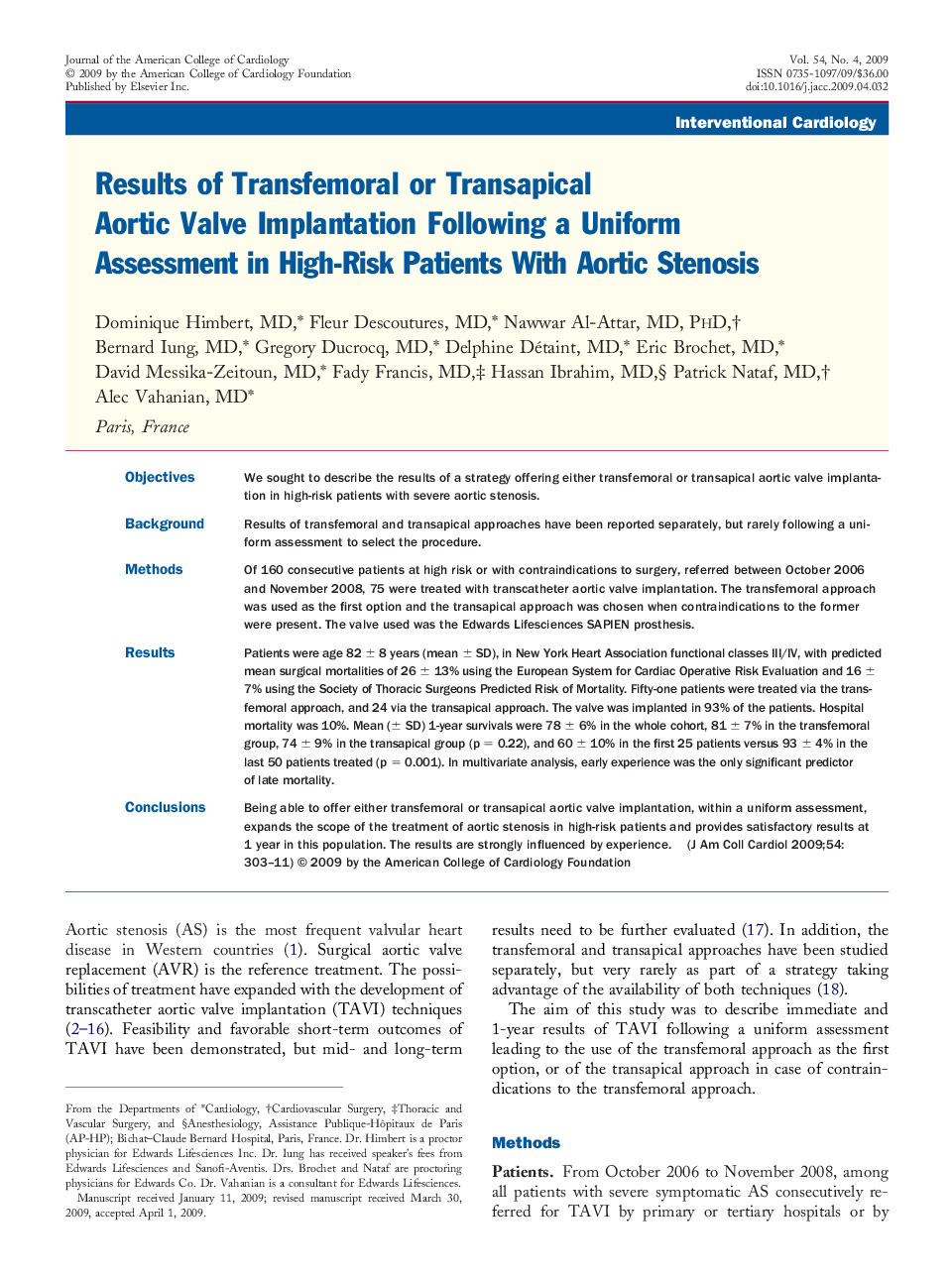| کد مقاله | کد نشریه | سال انتشار | مقاله انگلیسی | نسخه تمام متن |
|---|---|---|---|---|
| 2950768 | 1577359 | 2009 | 9 صفحه PDF | دانلود رایگان |

ObjectivesWe sought to describe the results of a strategy offering either transfemoral or transapical aortic valve implantation in high-risk patients with severe aortic stenosis.BackgroundResults of transfemoral and transapical approaches have been reported separately, but rarely following a uniform assessment to select the procedure.MethodsOf 160 consecutive patients at high risk or with contraindications to surgery, referred between October 2006 and November 2008, 75 were treated with transcatheter aortic valve implantation. The transfemoral approach was used as the first option and the transapical approach was chosen when contraindications to the former were present. The valve used was the Edwards Lifesciences SAPIEN prosthesis.ResultsPatients were age 82 ± 8 years (mean ± SD), in New York Heart Association functional classes III/IV, with predicted mean surgical mortalities of 26 ± 13% using the European System for Cardiac Operative Risk Evaluation and 16 ± 7% using the Society of Thoracic Surgeons Predicted Risk of Mortality. Fifty-one patients were treated via the transfemoral approach, and 24 via the transapical approach. The valve was implanted in 93% of the patients. Hospital mortality was 10%. Mean (± SD) 1-year survivals were 78 ± 6% in the whole cohort, 81 ± 7% in the transfemoral group, 74 ± 9% in the transapical group (p = 0.22), and 60 ± 10% in the first 25 patients versus 93 ± 4% in the last 50 patients treated (p = 0.001). In multivariate analysis, early experience was the only significant predictor of late mortality.ConclusionsBeing able to offer either transfemoral or transapical aortic valve implantation, within a uniform assessment, expands the scope of the treatment of aortic stenosis in high-risk patients and provides satisfactory results at 1 year in this population. The results are strongly influenced by experience.
Journal: Journal of the American College of Cardiology - Volume 54, Issue 4, 21 July 2009, Pages 303–311